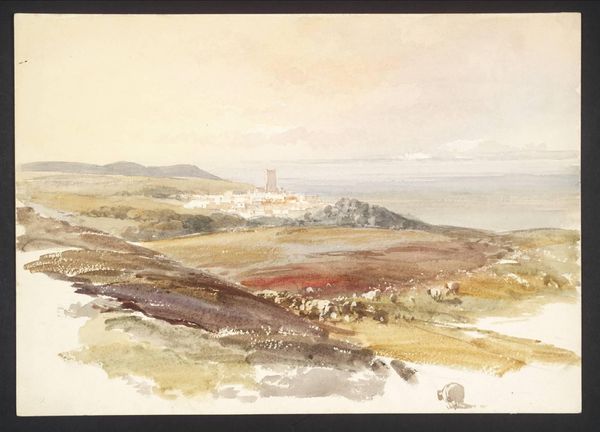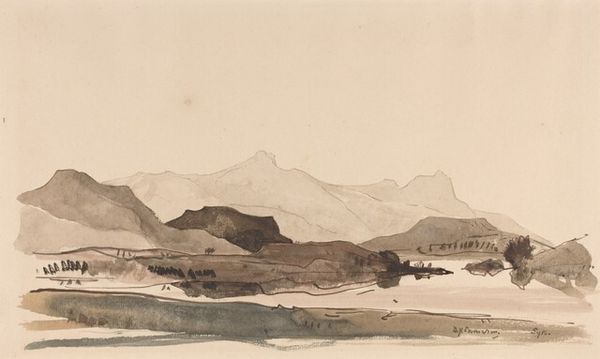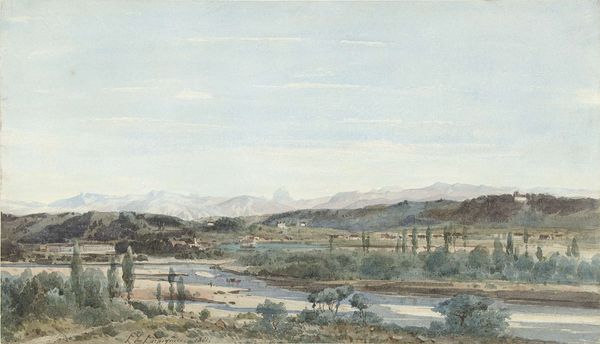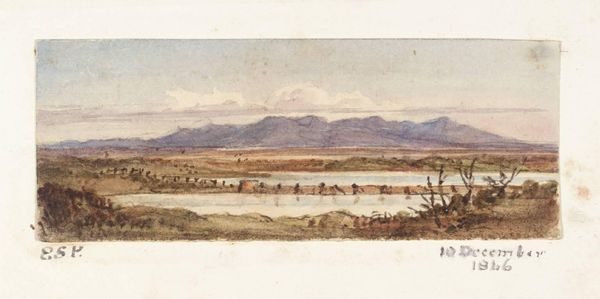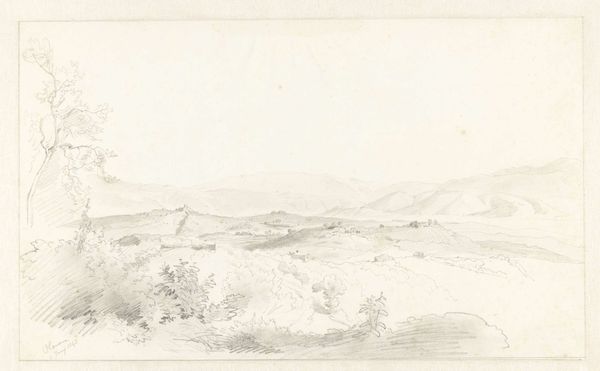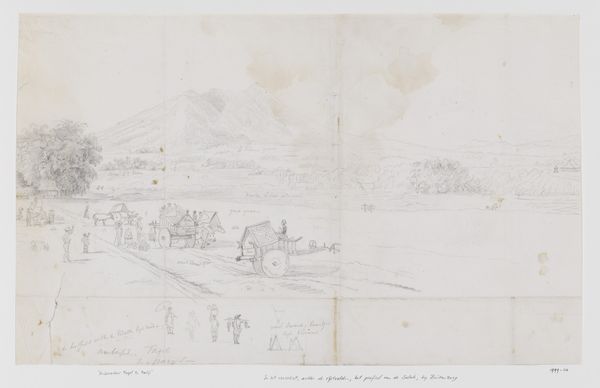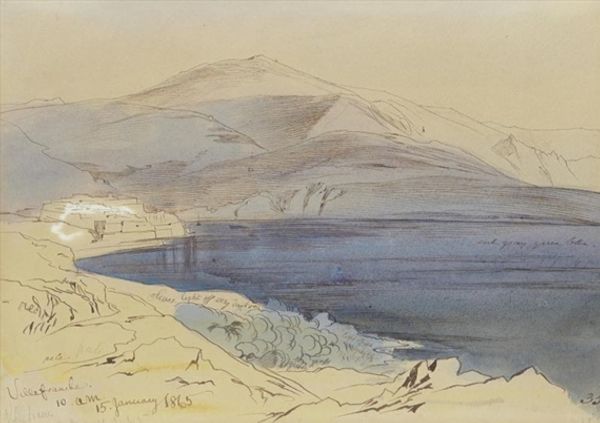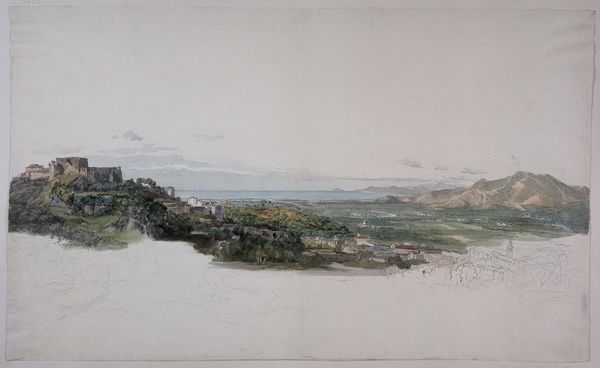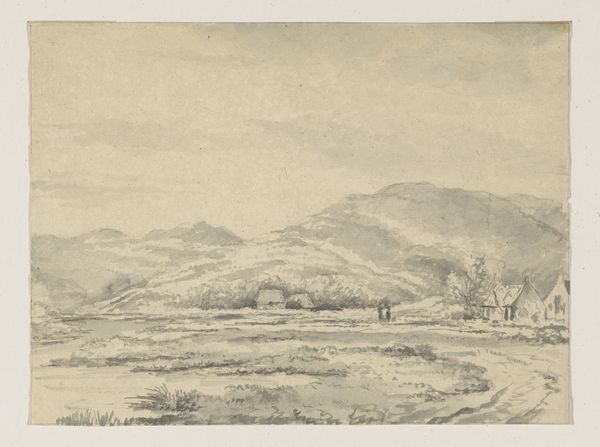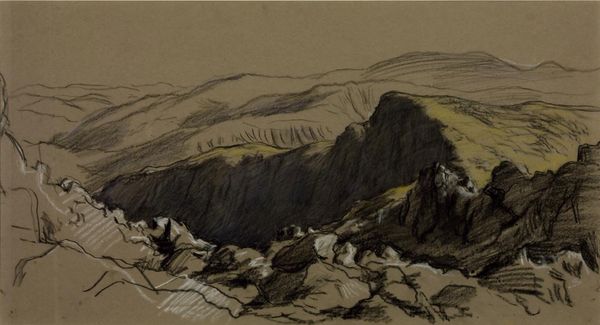
plein-air, watercolor
plein-air
landscape
watercolor
sketch
romanticism
Copyright: Public domain
Edward Lear made this watercolor of Eretria, Euboea, in Greece on June 20th, 1848. Lear, as a traveling artist, was of course shaped by the institutions of the art world which were starting to coalesce around him. Lear's delicate rendering evokes the picturesque tradition. Yet it also participates in the emerging visual tropes of "the landscape." This kind of landscape painting became a popular way for people to visualize, understand and celebrate the concept of nationhood during the 19th century. Mountains and valleys become emblems of cultural identity. But note how, in this watercolor, the landscape is also populated with signs of human life. Small houses nestle amidst the Greek terrain. It is a marriage of humanity and place that gives this kind of painting its cultural and political power. Landscape painting must be understood as a cultural practice. To better understand this artwork, historians will often look at travel journals, political writing, poetry and literature as ways to better understand the social and cultural significance of landscape painting in the 19th century.
Comments
No comments
Be the first to comment and join the conversation on the ultimate creative platform.
